Click on images to enlarge
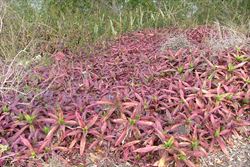
infestation growing in a sunny location (Photo: Sheldon Navie)
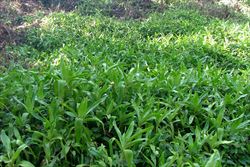
infestation growing in a shady habitat (Photo: Sheldon Navie)
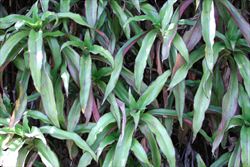
habit (Photo: Sheldon Navie)
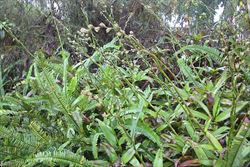
habit during flowering (Photo: Sheldon Navie)
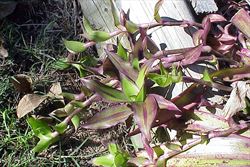
creeping stems (Photo: Sheldon Navie)
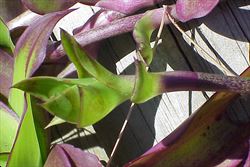
close-up of creeping stems (Photo: Sheldon Navie)
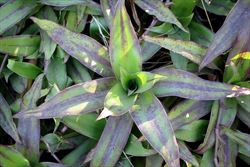
leaves (Photo: Sheldon Navie)

branched flower clusters (Photo: Sheldon Navie)
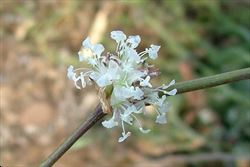
close-up of flowers (Photo: Sheldon Navie)
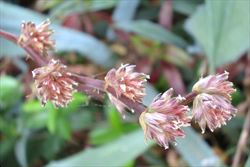
close-up of old flowers (Photo: Sheldon Navie)
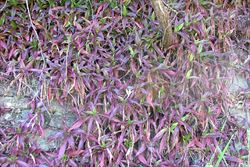
infestation growing on a rocky roadside cutting at The Gap in Brisbane (Photo: Sheldon Navie)
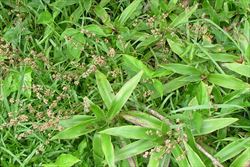
habit during flowering (Photo: Sheldon Navie)
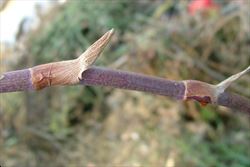
close-up of older fleshy stem (Photo: Sheldon Navie)
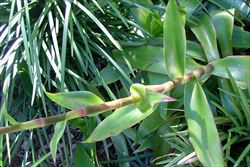
smaller, loosely clustered, leaves along the base of a flowering stem (Photo: Sheldon Navie)

close-up of flowering stem with small upper leaf (Photo: Sheldon Navie)
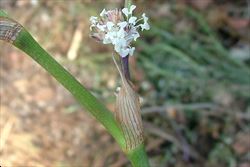
papery bracts along flowering branches (Photo: Sheldon Navie)
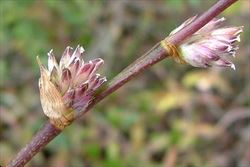
close-up of old flower clusters subtended by small papery bracts (Photo: Sheldon Navie)
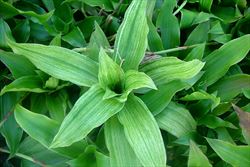
Callisia fragrans 'Melnickoff', a variegated cultivar of purple succulent (Photo: Sheldon Navie)
Scientific Name
Callisia fragrans (Lindl.) Woods.
Synonyms
Spironema fragrans Lindl.
Family
Commelinaceae
Common Names
basket plant, basketplant, fragrant inch plant, inch plant, purple succulent
Origin
Native to Mexico.
Cultivation
This plant is widely still cultivated in the warmer parts of Australia.
Naturalised Distribution
Naturalised in the coastal districts of eastern Australia (i.e. in southern and central Queensland and northern and central New South Wales). Also naturalised on Lord Howe Island.
Naturalised overseas in south-eastern USA (i.e. Florida and Louisiana) and Hawaii.
Habitat
A garden escape that has become common in waste ground and disturbed sites around urban areas, along roadsides and waterways, and in bushland areas adjoining settlements.
Habit
A long-lived (i.e. perennial) creeping herbaceous plant with leaves crowded into rosette-like clusters and spreading laterally via long runners (i.e. stolons).
Distinguishing Features
- a creeping herbaceous plant with clusters of large, green or purplish, fleshy leaves
- its fleshy spreading stems produce roots and give rise to new plants.
- its flowers are borne in clusters at the top of long upright stalks.
- its small flowers are almost stalkless and have white petals.
Stems and Leaves
The thick stems are rather fleshy and develop into long runners (i.e. stolons). These runners can be branched and readily give rise to new plants, allowing a population to spread quite quickly. The flowering stems are more upright (i.e. erect or ascending) and reach up to 1.5 m tall.
The large clustered leaves (5-40 cm long and 2.5-10 cm wide) are spirally arranged and either green, purplish-green or purplish in colour (they tend to be greener in shady habitats and have more purplish coloration in sunny habitats). These leaves are oblong or elongated (i.e. lanceolate) in shape, hairless (i.e. glabrous), and have pointed tips (i.e acute or acuminate apices). The base of the leaf is narrowed to an inconspicuous sheath, which is more clearly seen on the much smaller leaves found along the stolons.
Flowers and Fruit
The flowers are fragrant and clustered towards the tips of long flowering stems (i.e. they are arranged in terminal panicle-like clusters). These branched clusters (up to 50 cm or more long) contain large numbers of flowers and are arranged into smaller dense clusters, each subtended by a papery bract (10-15 mm long). Individual flowers are almost stalkless (i.e. sub-sessile) with three elongated (i.e. lanceolate), short-lived, white petals (about 6 mm long) that wilt at noon. They also have three whitish-transparent, membranous (i.e. scarious) sepals (5-6 mm long) that are elongated in shape (i.e. lanceolate). Each flower also has six large white stamens, that can sometimes be mistaken for petals (i.e. the connectives between the anthers on each stamen are broad and flaglike), and an ovary topped with an elongated (i.e. penicillate) stigma. Flowering occurs mostly during late winter and spring.
The fruit are small, three-celled, capsules.
Reproduction and Dispersal
This species is known to reproduce by seed, but naturalised populations in Australia generally reproduce via the creeping (i.e. stoloniferous) stems.
Populations can spread laterally via the elongated stems and can cover very large areas in a relatively short period of time. Plants and stem segments are mainly dispersed to new areas in dumped garden waste.
Environmental Impact
This garden escape is well established in south-eastern Queensland, where it is regarded as a significant environmental weed and appears on several local council weed lists (e.g. it is regarded as one of the 12 most concerning environmental weeds in the Hervey Bay local authority area) as well as in the list of the top 200 invasive species for this region. It has more recently become naturalised in New South Wales, and hence is not currently regarded as a major problem there.
Purple succulent (Callisia fragrans) forms a dense spreading ground-cover that can rapidly overtake bushland areas. It therefore has the potential to crowd out native species and prevent their regeneration.
Legislation
Not declared or considered noxious by any state government authorities.

